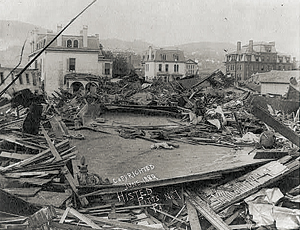When disasters challenge the limits of engineering, all too often death and destruction follow. That is because engineering is, in a basic sense, a set of protective disciplines that enable people to live and work safely in the presence of forces that would other-wise kill them. The American Society of Civil Engineers has long recognized its responsibility, as one of the nation’s leading engineering societies, to try and answer the questions that arise when forces overtake engineered structures. ASCE regularly has been dispatching analysis teams of volunteer experts to disaster sites since 1889, when a poorly maintained dam impounding 20-million tons of water gave way during torrential rains and drove a 40-ft-tall, half-mile-wide wall of debris through Johnstown, Pa., wiping out four square miles of the town and killing 2,209 people in what The New York Times called “an engineering crime.”

By understanding how materials and structures respond, in terms of forces and reaction, designs can be improved and construction techniques and maintenance requirements validated. When forces become extreme, significant lifesaving knowledge can be gained by investigative teams of experts collecting the often perishable data in the field. They perform an enormous service.
Fortunately, those extreme tests are unusual enough that no cadre of full-time, post-disaster engineering-assessment specialists exists, although there is a large pool of expertise that can be called upon in times of need. That is some relief. But the downside is that sometimes well-intentioned and heartfelt efforts to develop vital answers in emotionally wrenching situations—like the bombing of the Alfred P. Murrah Federal Building in Oklahoma City in 1995, attacks on the World Trade Center and Pentagon eight years ago, and devastation of New Orleans by Hurricane Katrina in 2005—can expose those technical volunteers to the lash of a society eager to lay blame. Allegations of conspiracy, bias and cover-up are as predictable as a sunrise and come up about as often. And the larger and more painful the disaster, the greater the flood of accusation and outrage, even if the claims have no validity.
In belated and painful recognition of this, ASCE’s development of a Post-Disaster Assessment Manual is an excellent move. It codifies best practices for mobilizing investigative teams and funds. It calls for the creation of oversight committees when external funds must be used and clarifies rules for eliminating any bias or conflict of interest.
The manual is a concise document of 35 pages. A large portion addresses publication of findings and the need to engage regularly and responsively throughout the process with the public and the media. Knowledge has no social value without communication. This too is a disaster lesson learned. Let’s hope ASCE’s manual helps society capture that lesson.

Post a comment to this article
Report Abusive Comment